3D scanning in archeology. Personal experience, used equipment and other
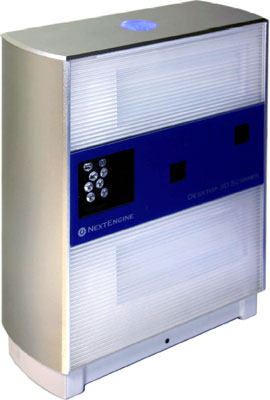 Hello. I am a student of the 4th course of the Irkutsk State Technical University ( ISTU ) of the Department of Automated Systems.
Hello. I am a student of the 4th course of the Irkutsk State Technical University ( ISTU ) of the Department of Automated Systems.Since I have been fond of history and archeology for a long time, and in 2012 I began to deal with a self-made 3D scanner , which the ISTU Technopark director accidentally saw, thanks to him I ended up at the Laboratory of Archeology, Paleoecology and Vital Systems of the Peoples of Northern Asia, NI ISTU (hereinafter referred to as laboratory"). And a couple of months after my arrival at the laboratory, the first NextEngine 3D scanner appeared , which was brought by Canadian archaeologists from the University of Alberta. Under the cut, scan results, descriptions of other scanners, field experience using the equipment and more
Attention! In the spoilers can be a lot of photos of large size.
All given models can be viewed with any 3D editor or MeshLab program.
NextEngine
Actually, with NextEngine, work began on scanning archaeological materials.
Equipment and documentation for NextEngine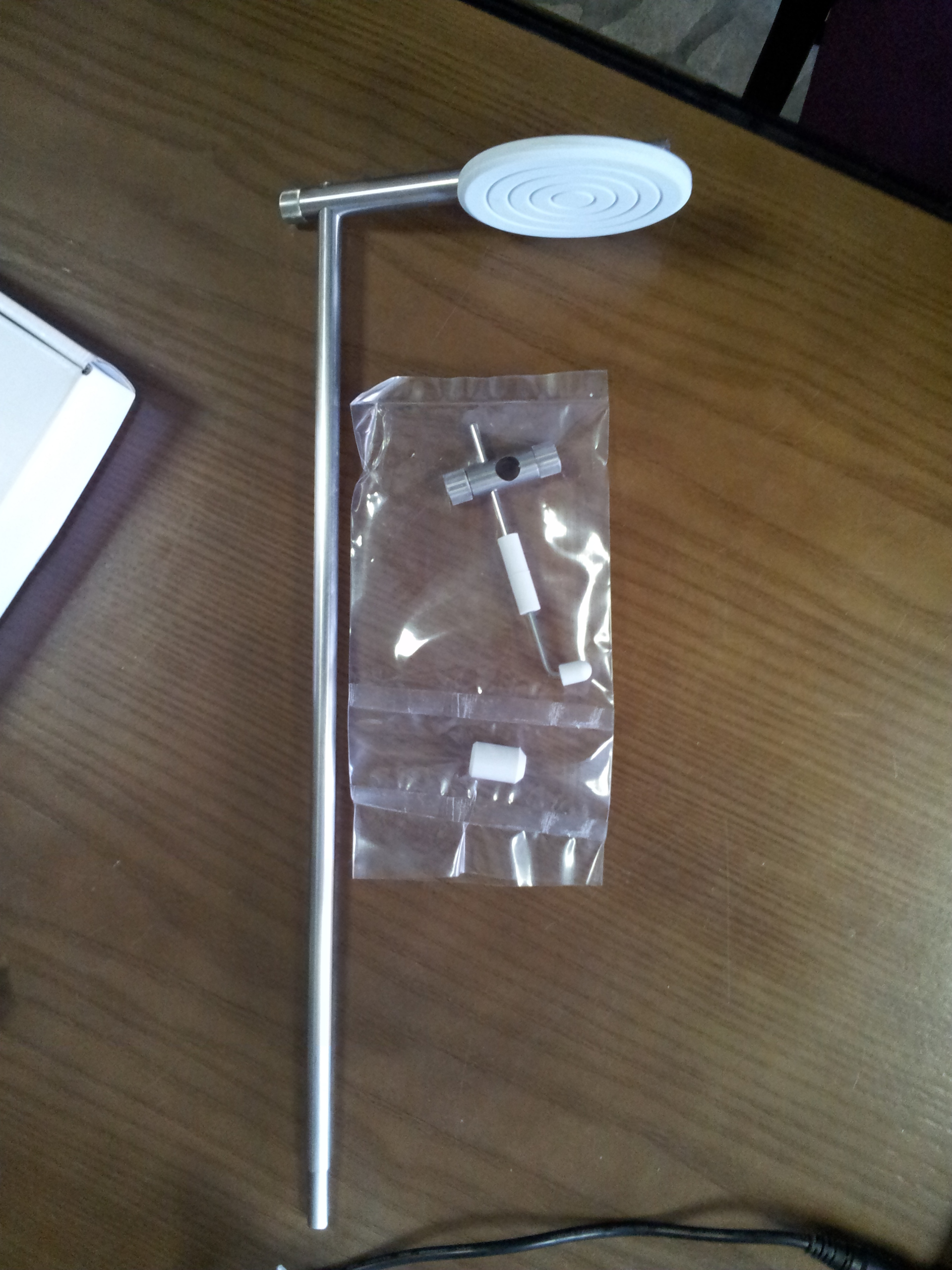
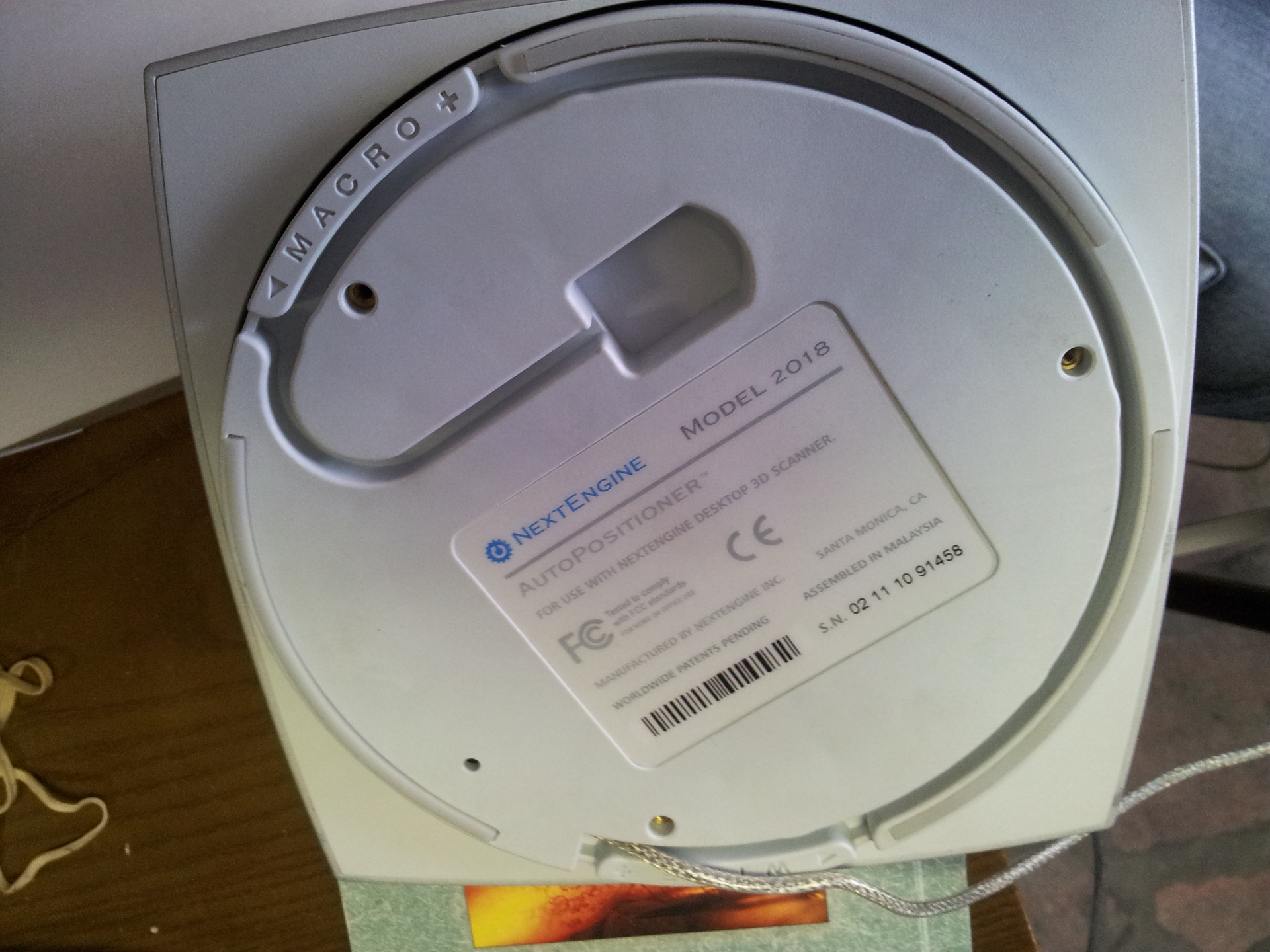








')
Technical characteristics of NextEngine can be found here .
The first object that I scanned on this equipment was a fairly poorly preserved skull. Taking into account the fact that there was no understanding of how to scan an object and this work was done in free time, the scanning process took about a month.
It is worth noting that the software supplied with the scanner crashed for unknown reasons and the results were not saved. In this case, you had to start working with the previous saved version.
Photos of the process of scanning the skull on NextEngine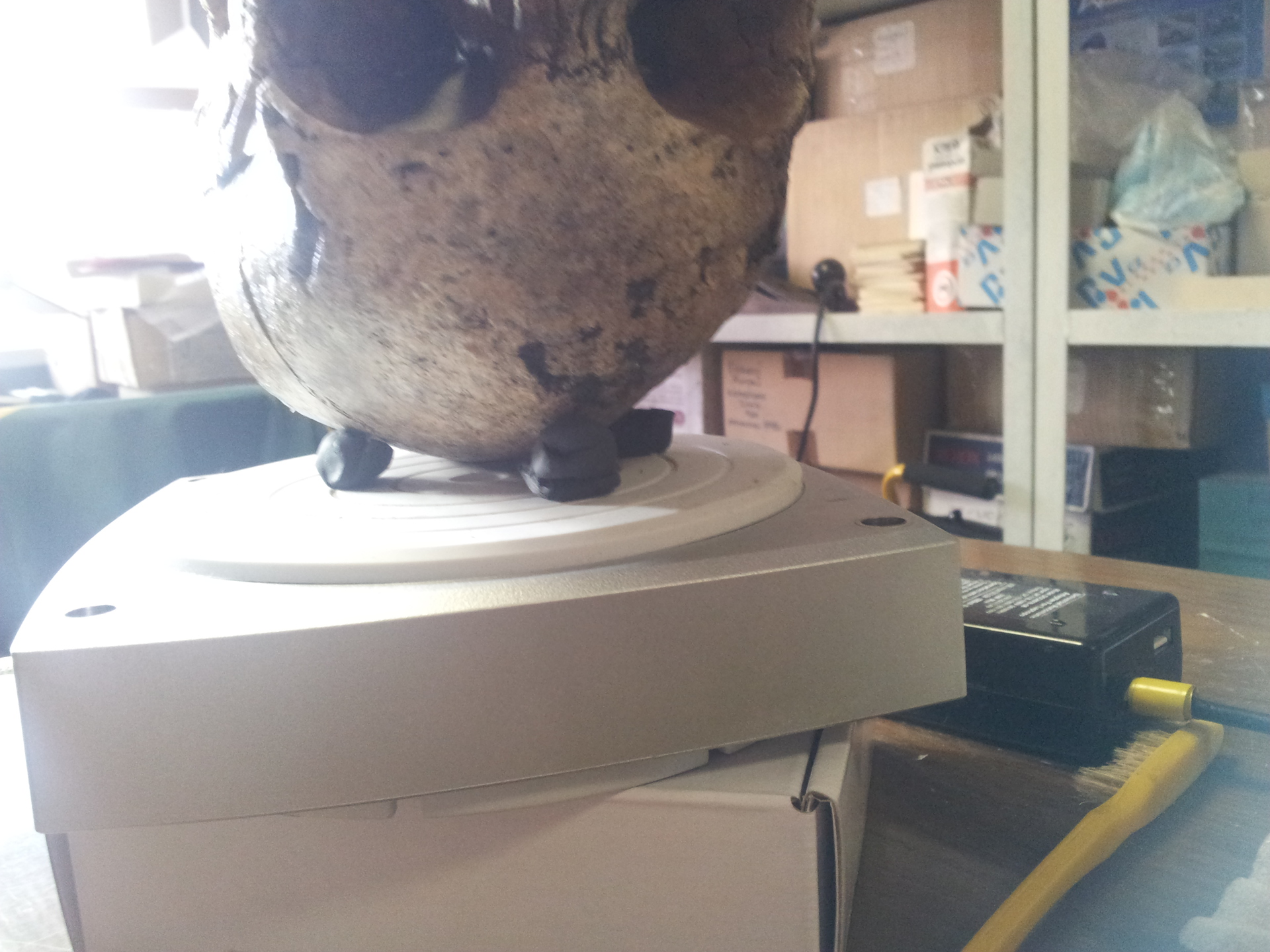

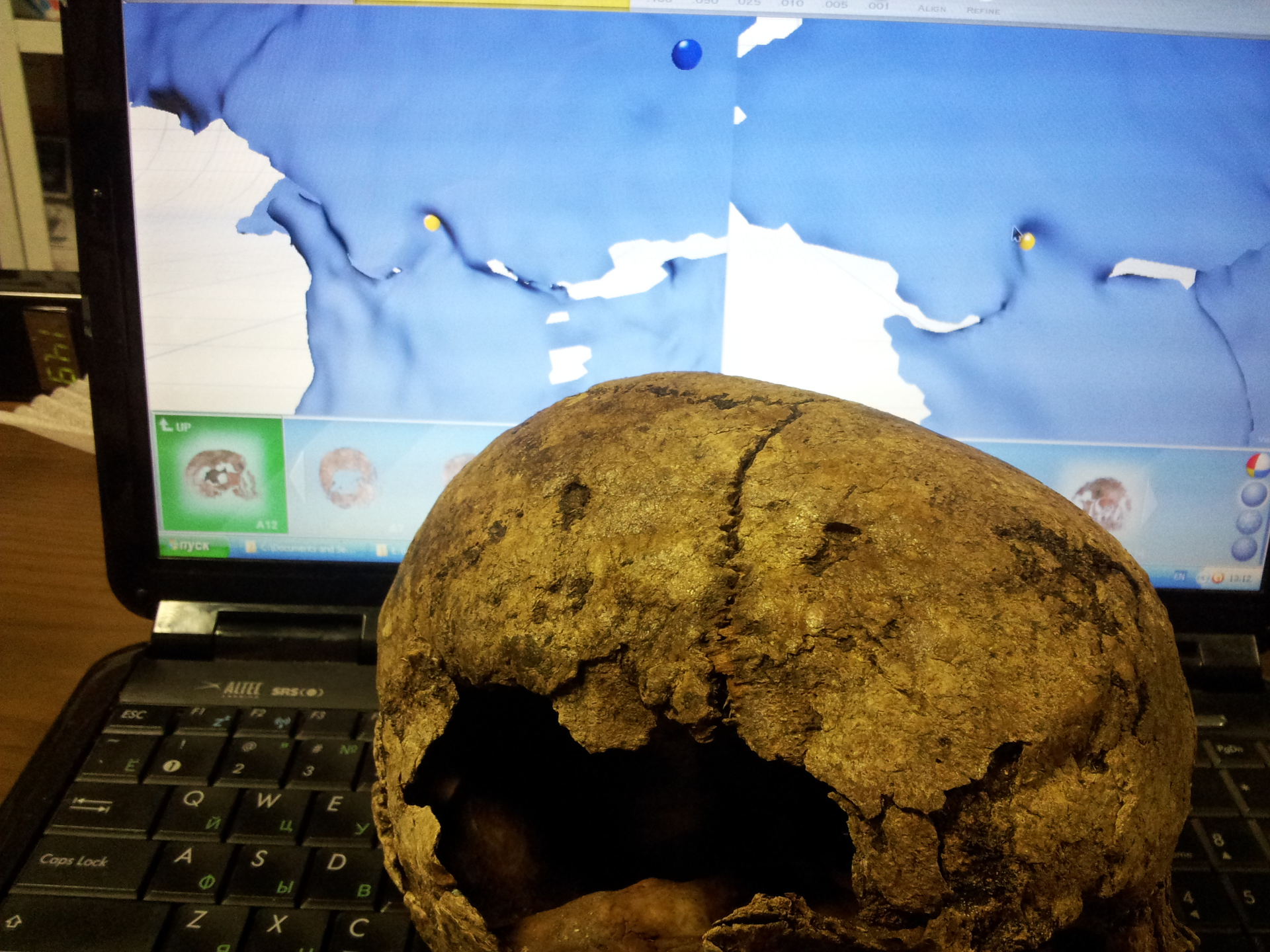
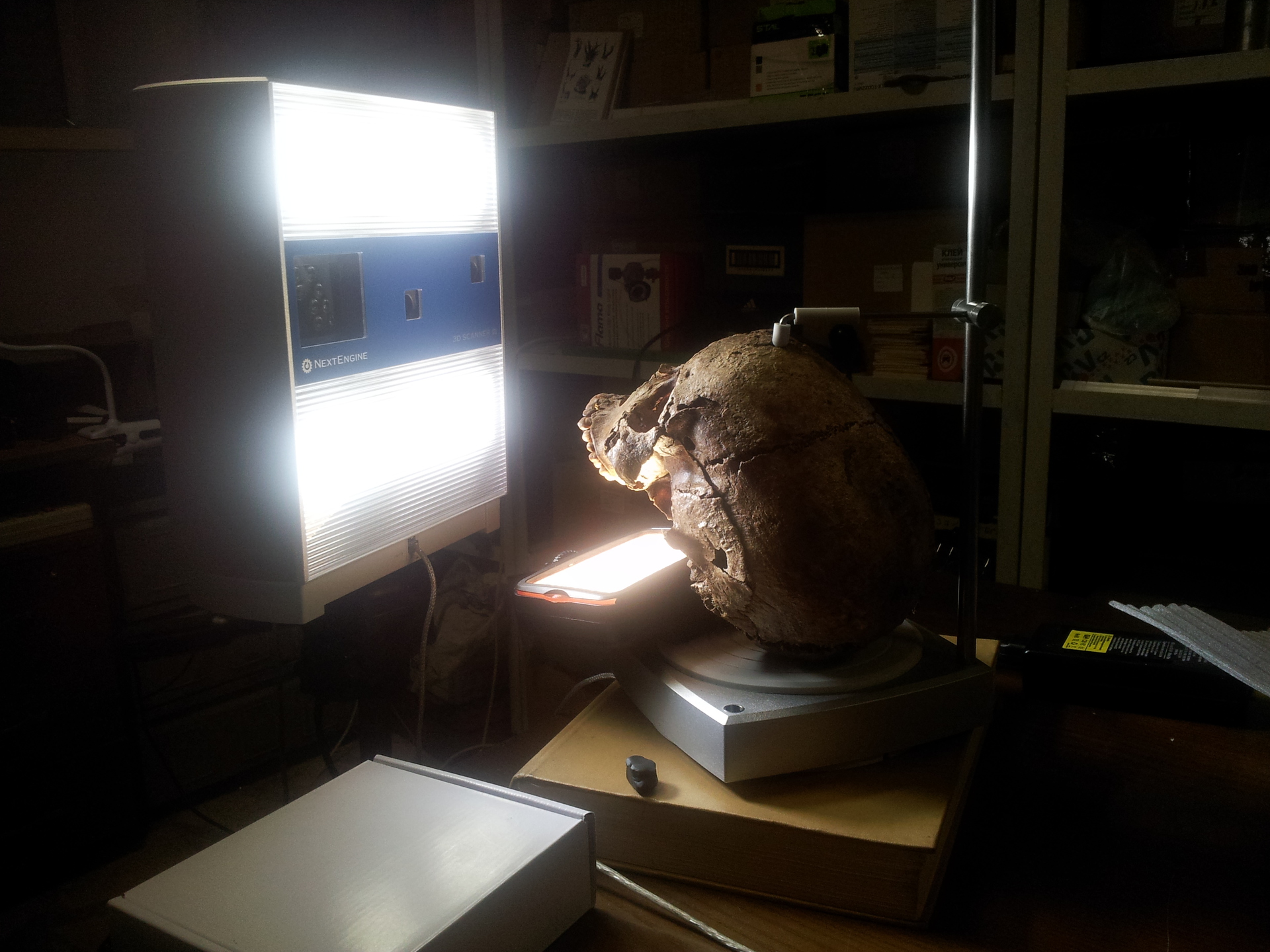




We also used this scanner during excavations at the “Windows” burial ground in the Trans-Baikal Territory, near the city of Krasnokamensk.
Since there are no special conditions in the field, the skeleton in the grave pit was scanned at night, moving the scanner over the burial. Scanning time was about 2 hours. Since the scanner does not contain a built-in battery, power was supplied from the gas generator.
The process of scanning the skeleton at night

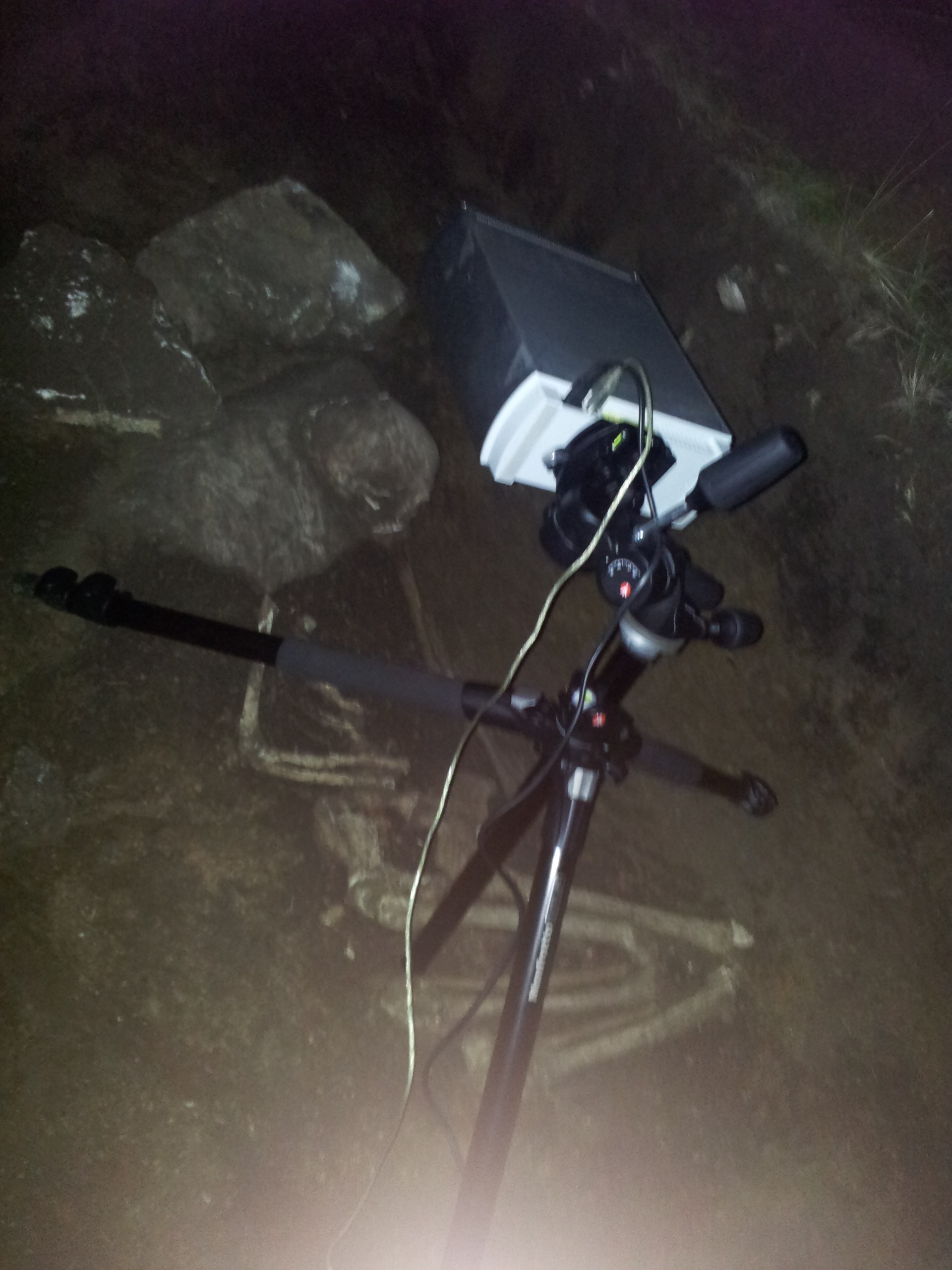
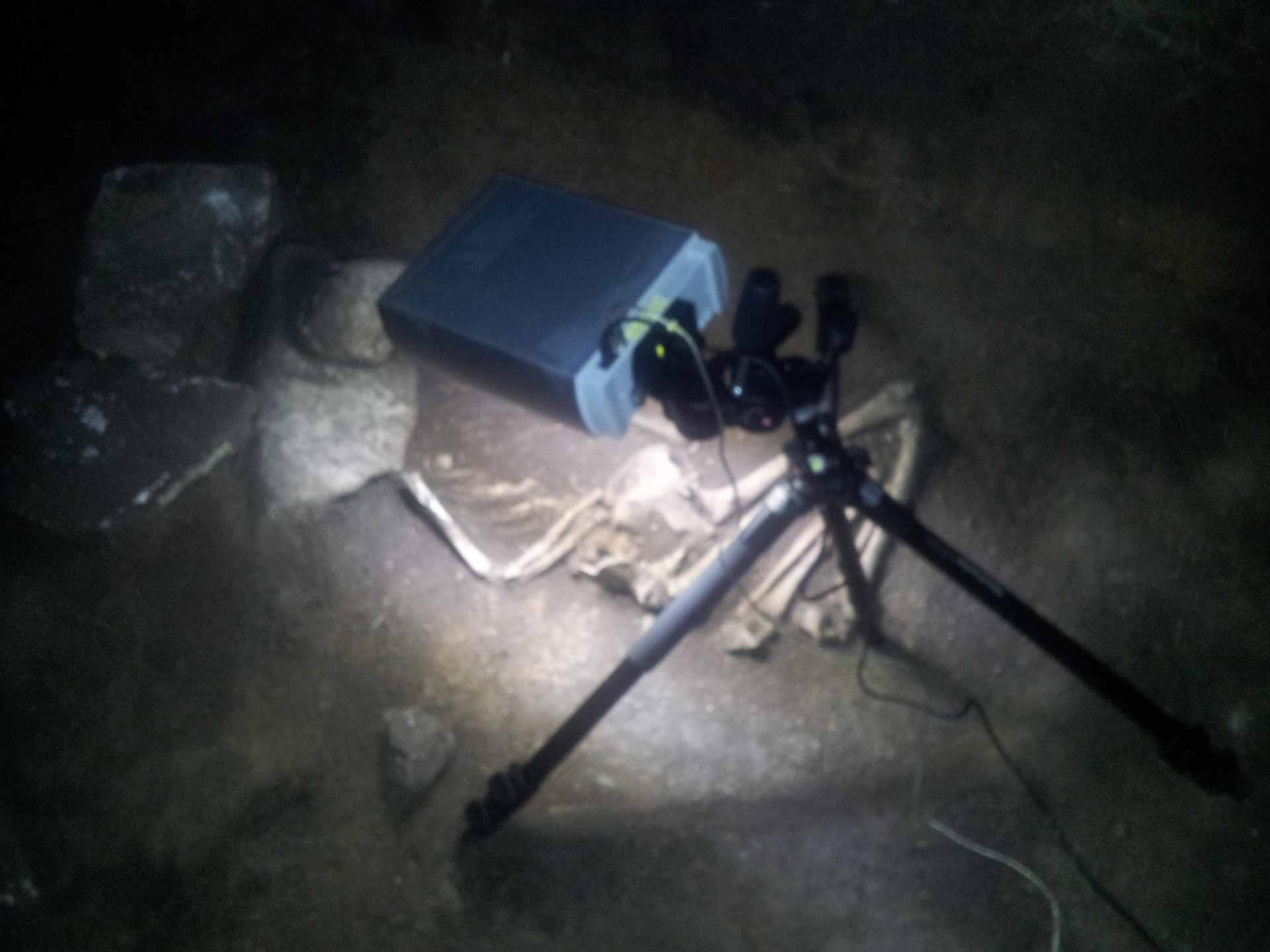
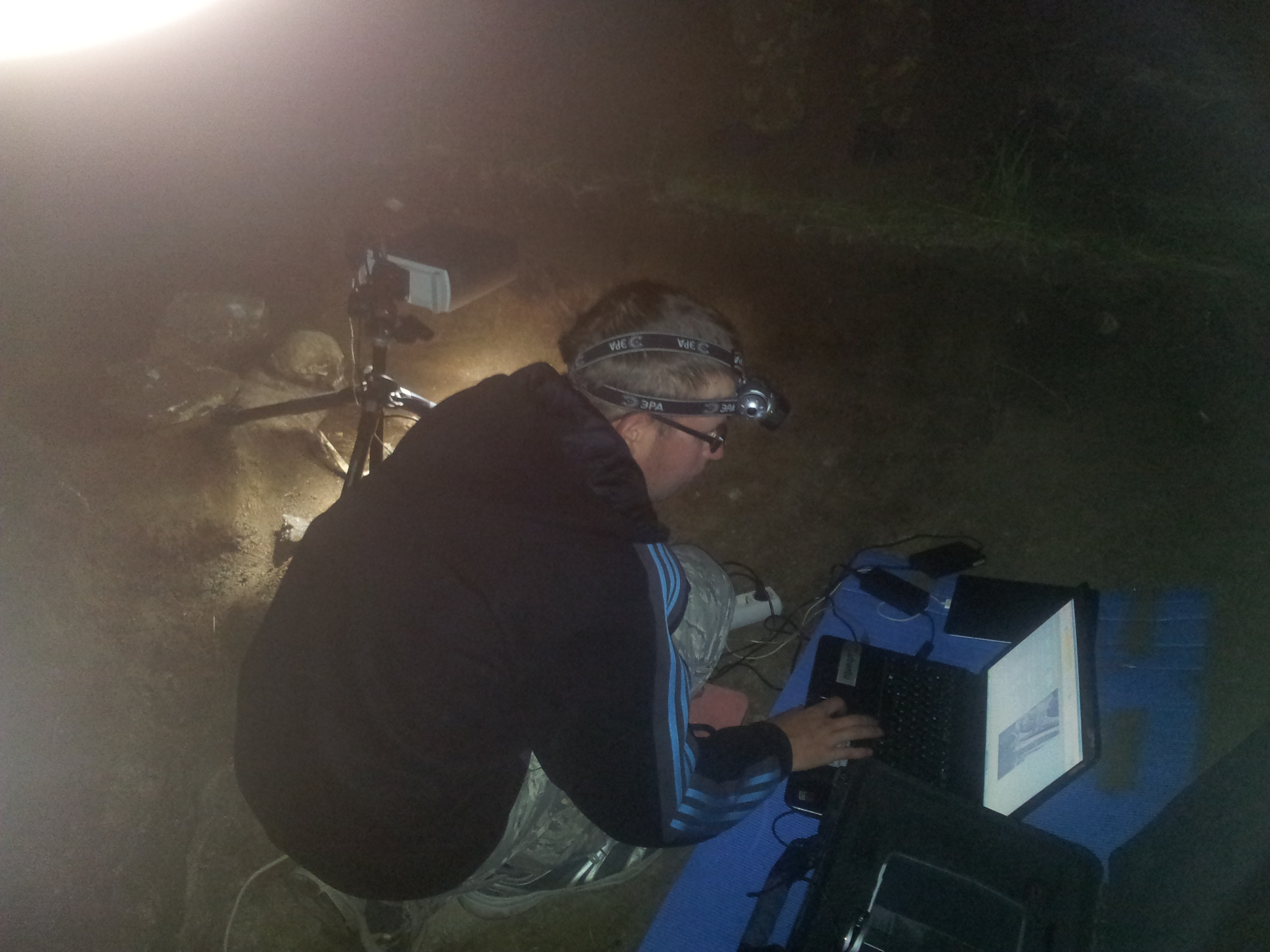
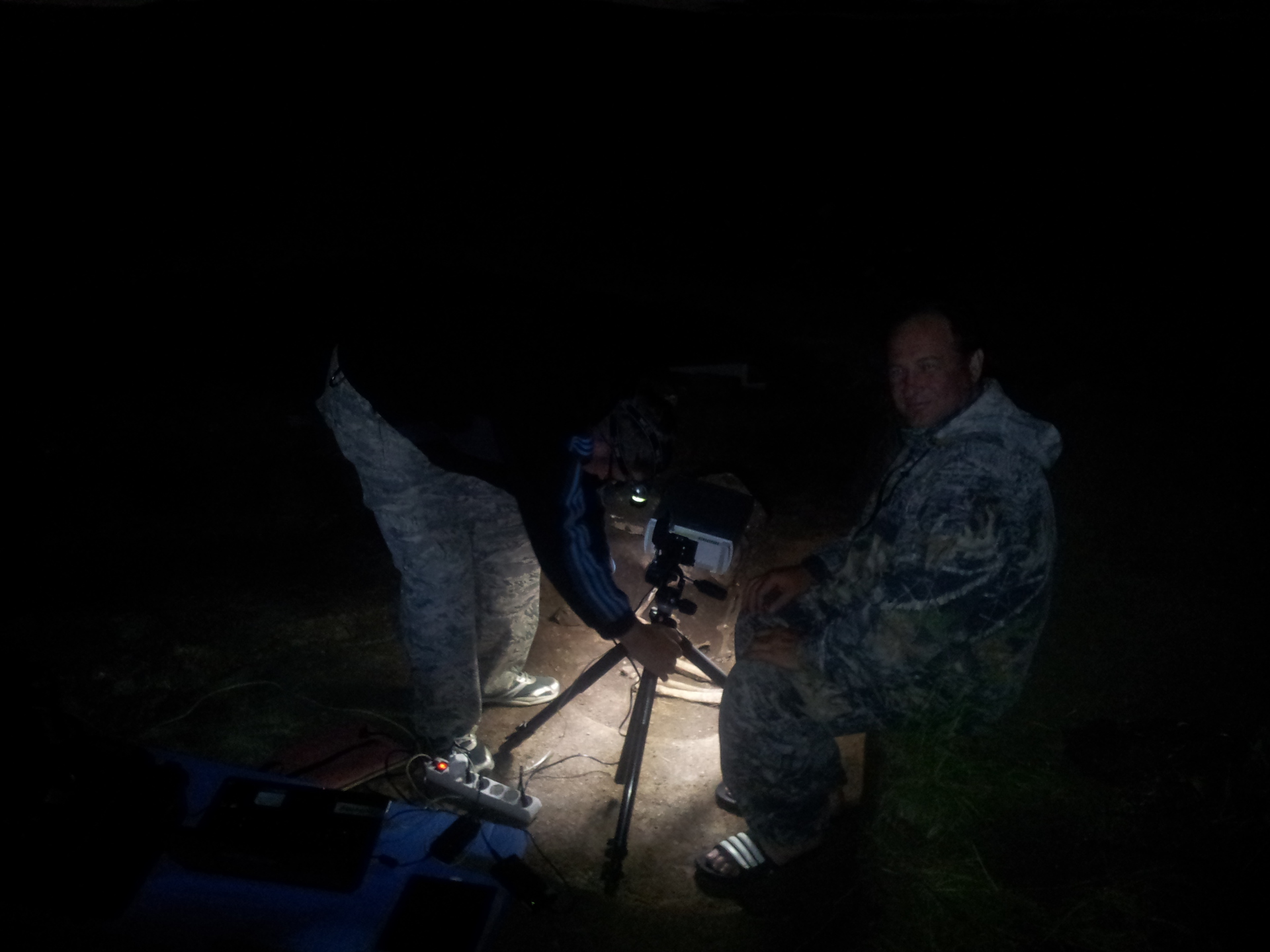
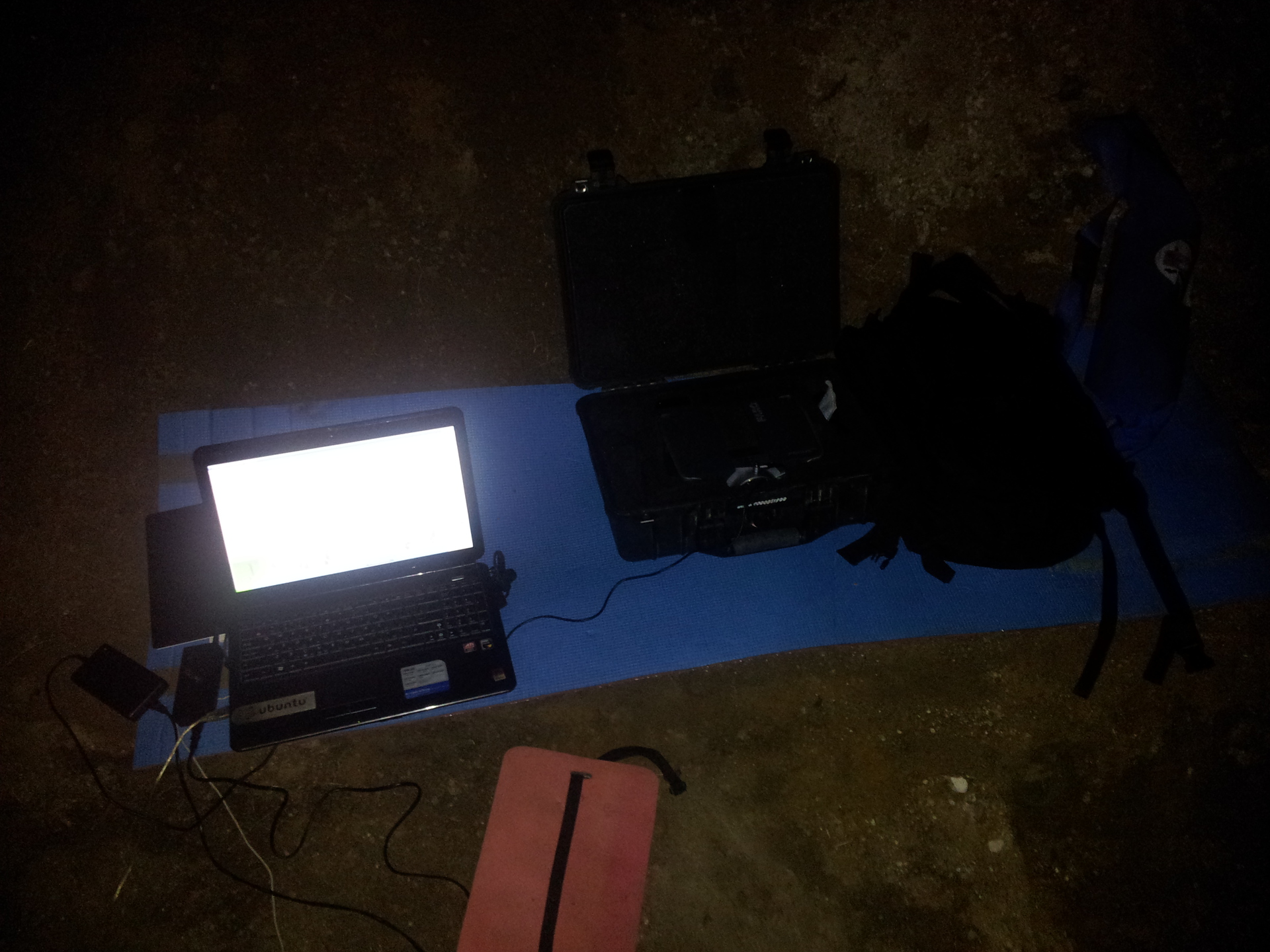







Also, to refine the scanning process in the field, a piece of the boiler was scanned.
The process of scanning the wall of the boiler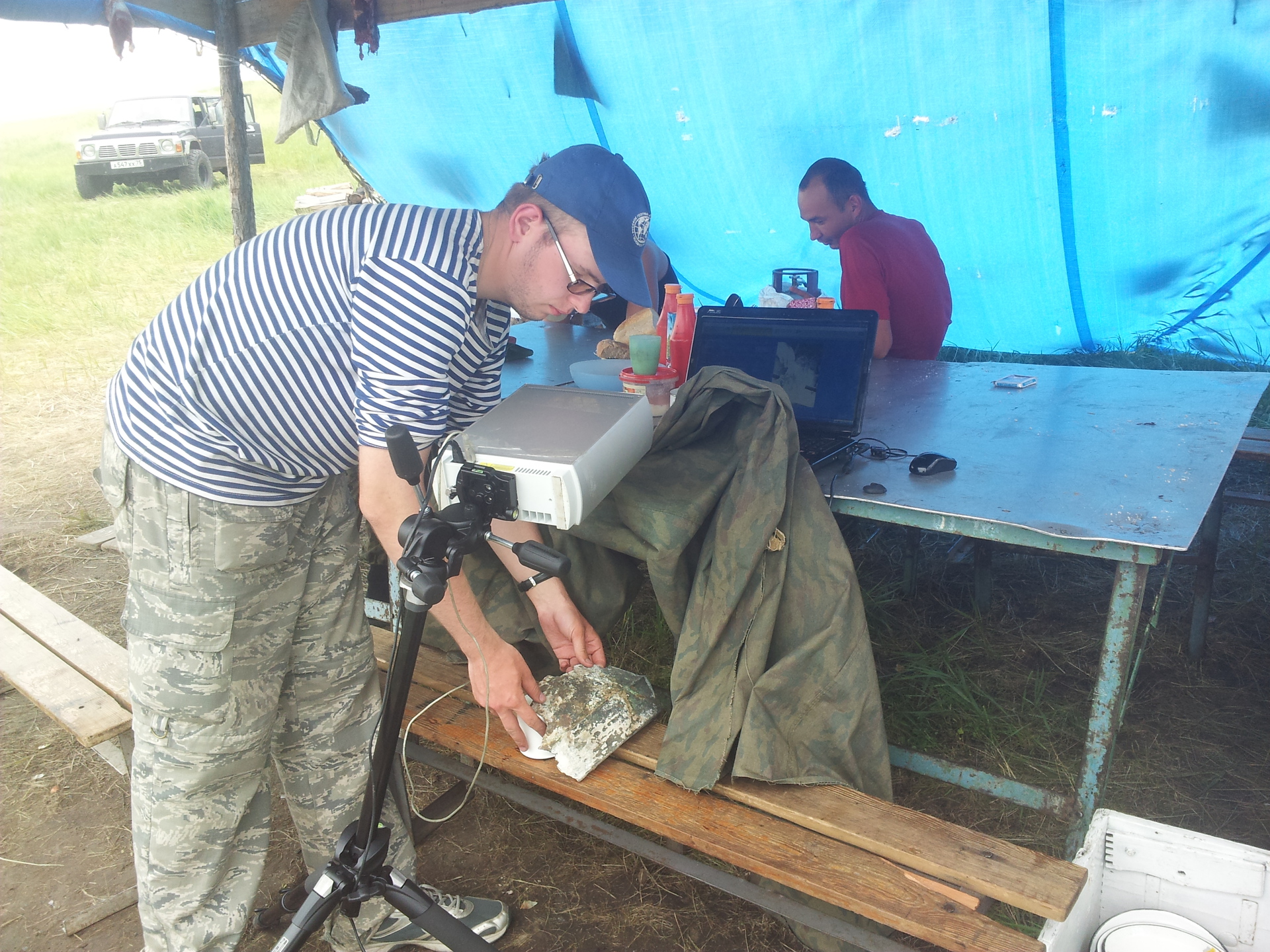

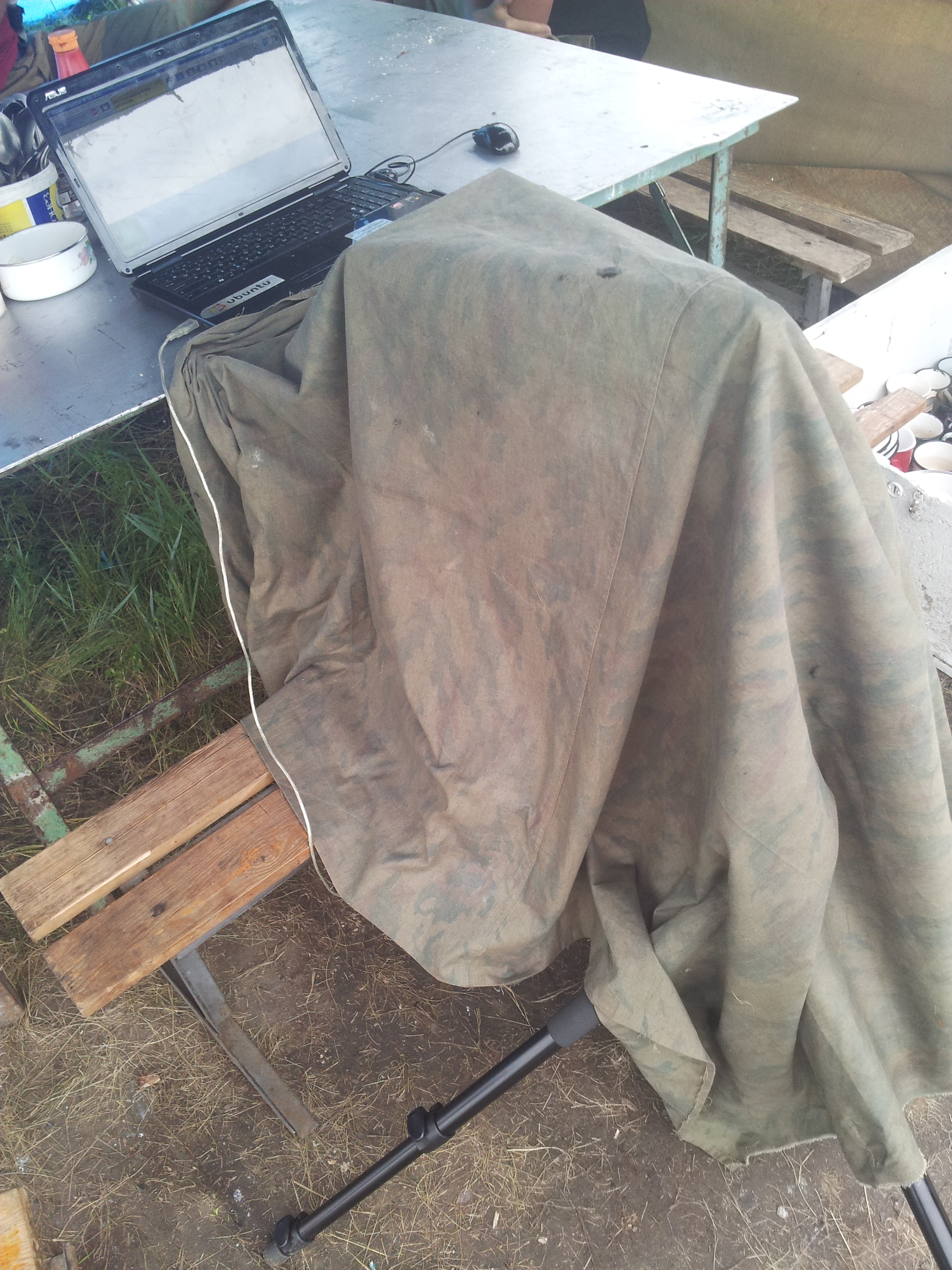
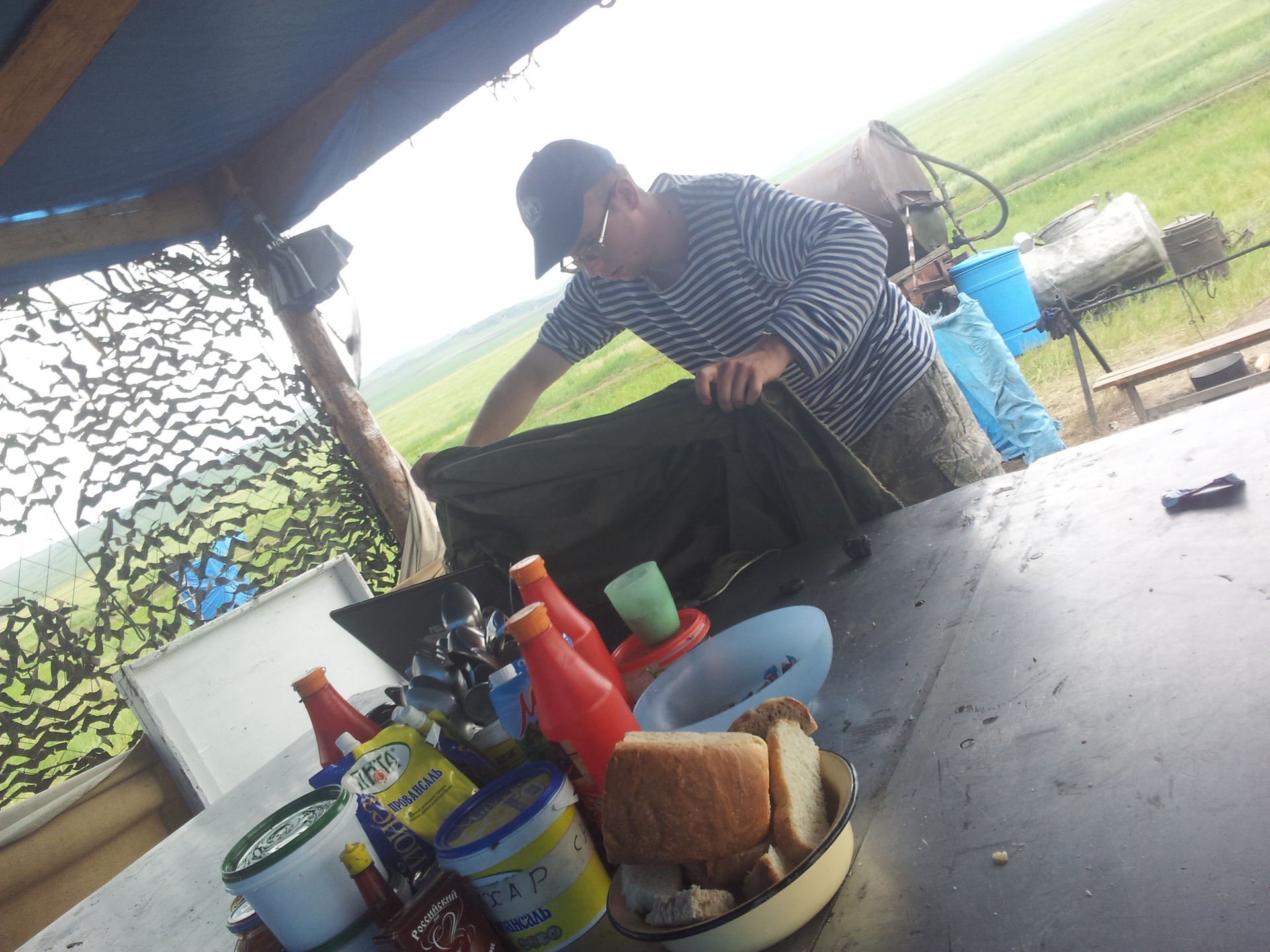




Examples of scan results:
Findings:
- Lightweight, portable, convenient to carry.
- Cheap (3K $
- Long scan time (3 minutes per side)
- The program is activated quite problematic
- Software crashes under unclear what conditions
- The software is intuitive and has a minimal set of initial model processing functions.
In general, at the moment we practically do not use it in the laboratory.
Breuckman smartSCAN
This scanner appeared in the laboratory in September 2012. In October, vendors conducted a two-day training on the use of this unit. In my opinion, the device is one of the best on the market, but terribly expensive (a scanner equipment set, 3 sets of lenses, a turntable, a tripod, a computer cost a few million rubles).
The essence of a set of lenses is that, depending on the size of the object and the selected lens, a different error is obtained.
We, as a rule, use a 125 lens to scan cores, plaques, jewelry, small bones and other small objects.
For larger ones - the skull, jaws, vessels, deer bones, etc., the “400” lens must be used.
The lens “800” was used only once, when scanning models of statues for sculptors of ISTU.
Photo specifications of this scanner can be found here .
The scanning process is as automated as possible. The scanner has a 10-meter cable, which is part of the wires connected to the monitoring station, and two more IEEE1394 wires that transmit data from the cameras are connected to the computer's PCI card.
To handle large amounts of data requires a powerful computer. We have a 6-core xeon with 14GB of RAM.
Objects are usually scanned using an automated turntable that connects via USB to a computer. The scanner software uses a USB key for its work. The software license is issued for one year.
The scanner software is quite powerful and covers a large number of tasks.
It is also possible to change the number of polygons in the model by recalculating scan data. That is, if we scan to Preview, and then we need a greater accuracy of the model, we can tell the computer to recalculate the model. In the case of a large number of scans and the required accuracy of the result, the recalculation process can reach up to 6-7 hours or more with a 100% processor load.
In case of problems, German technical support can help rather quickly.
If you look at the drawbacks of the scanner, then the only negative is its dimensions, which accordingly affects the possibility of transportation. The cost may also be a disadvantage.
Scan on breuckman smartSCAN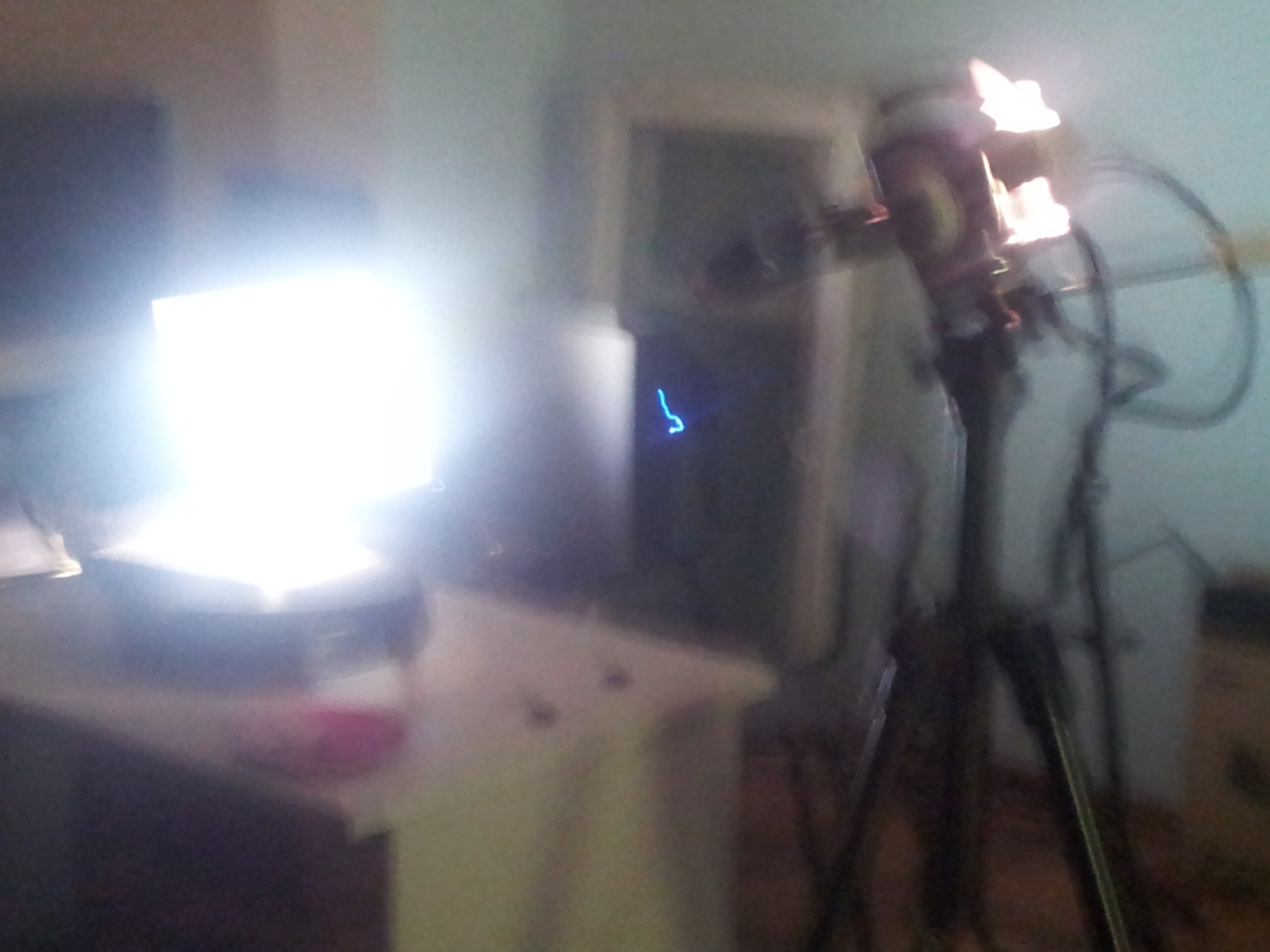
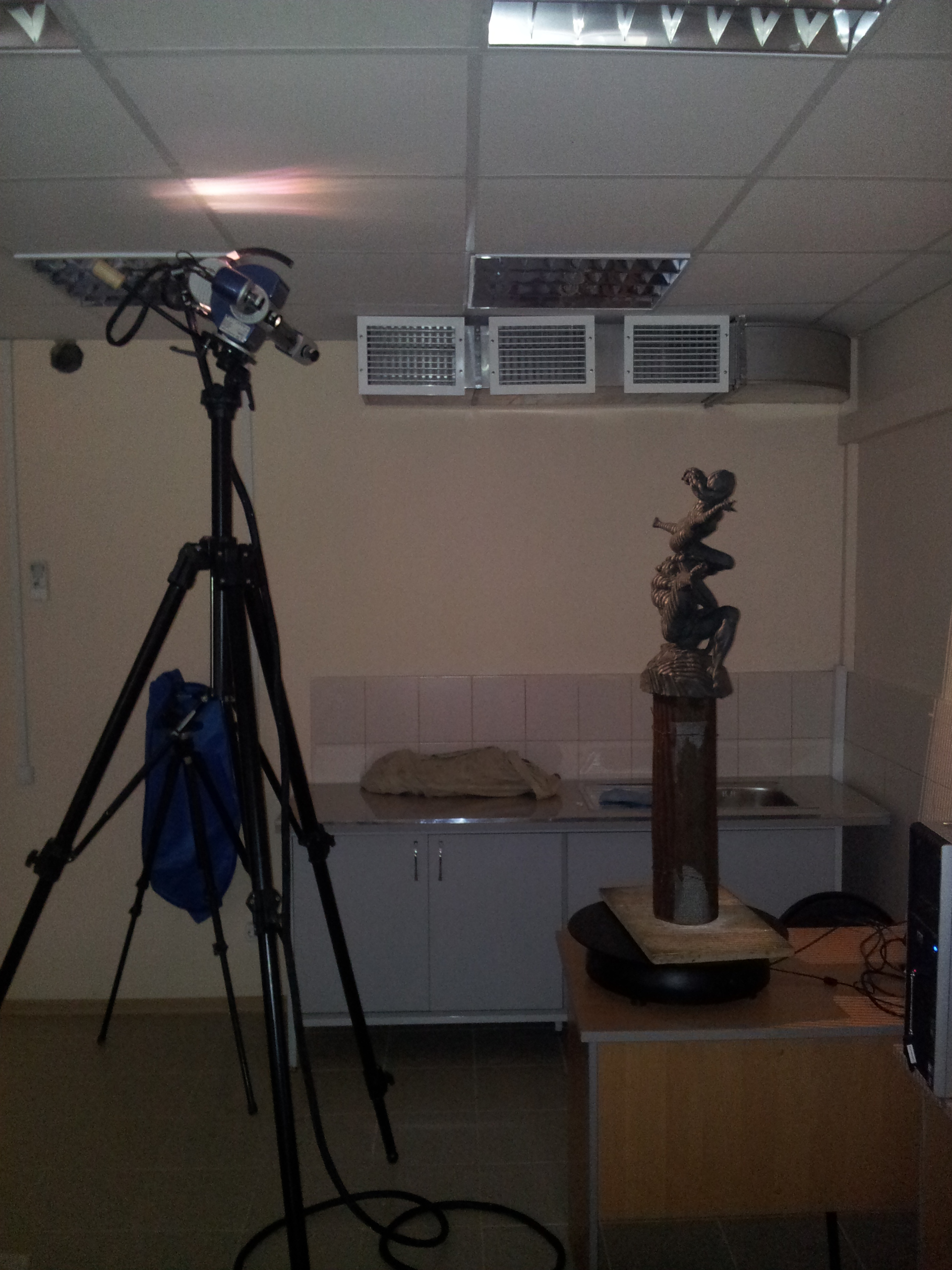


It is worth noting that some scans are sent to other archaeologists abroad. 3D models of bones of a ram from burial were sent to anthropologists in Canada, and the bowl of the Mongolian time to specialists in Japan.
Faro Laser Scanner Focus 3D
This scanner is designed to scan rooms, buildings, structures, mine workings and so on. Scanning range - up to 200-300 meters. Used in the summer of 2013 to scan the excavation.
Technical specifications are available on the manufacturer's website . Also, who are interested, there you can download software for processing scans. Due to the large amount of initial data, I will not show the results.
Details on how we used it can be found in the article submitted to RAESC 2014, and the results of the scan can be found in the presentation . To play 3D models in a PDF file requires Adobe Reader version 10 and higher.
Of the interesting things in this scanner, you can highlight the fact that the scanner uses a modified version of GNU / Linux. The scanner has a battery designed for about 5 hours of work. Results are written to the SD memory card.
The average scan time of one level of the grave pit is 10-15 minutes.
Results from the scanner were processed using Geomagic Studio and Rapidform XOR3.
Actually, with the help of Rapidform XOR3 we process scans from other scanners, including breckman and nekstenzhin.
Further, when we went to the Mongolian settlements, we tried to scan a small Koktuisk town, but due to the fact that there was a lot of grass, we did not succeed.
Photos from Faro Laser Scanner Focus3D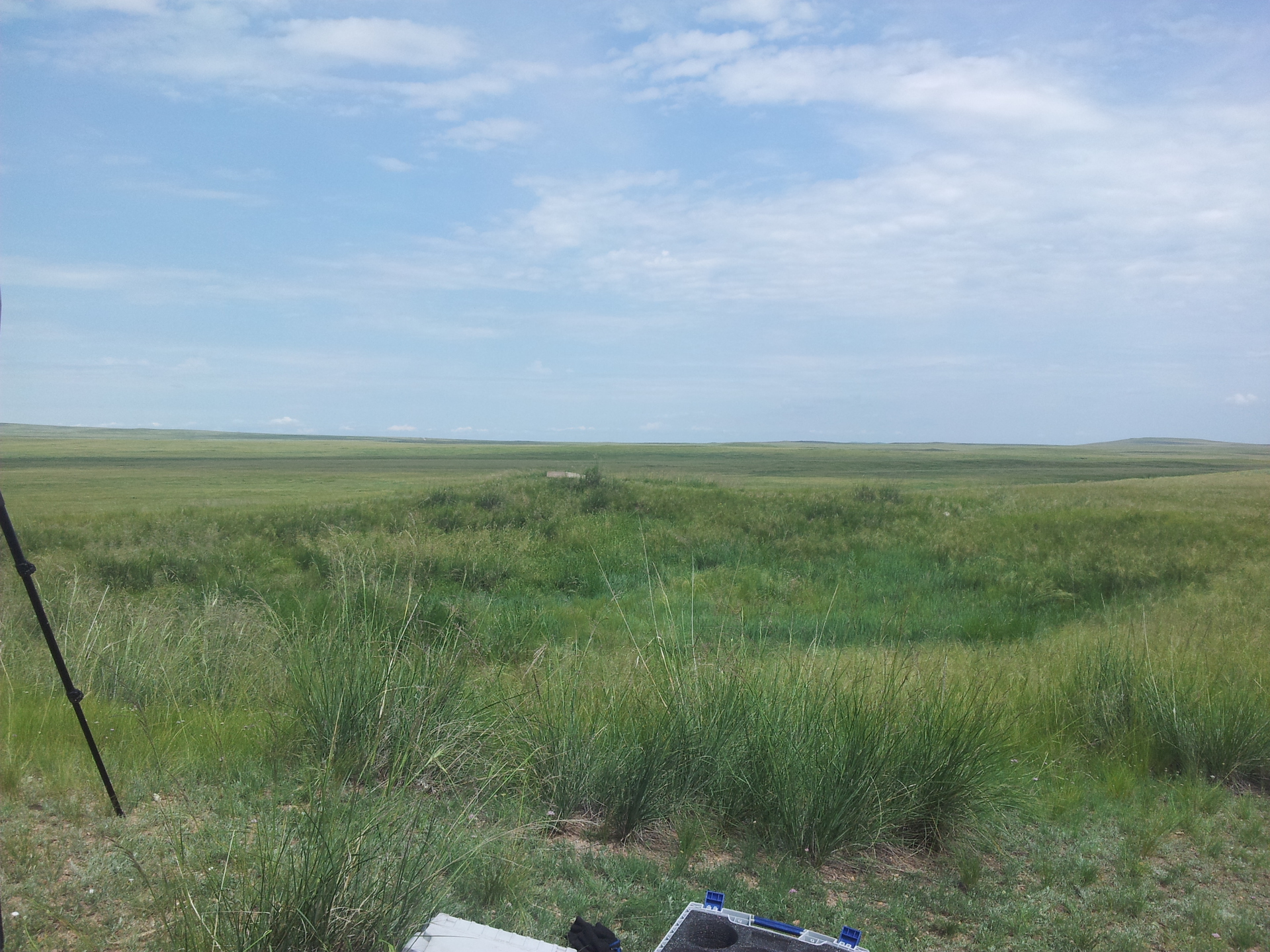

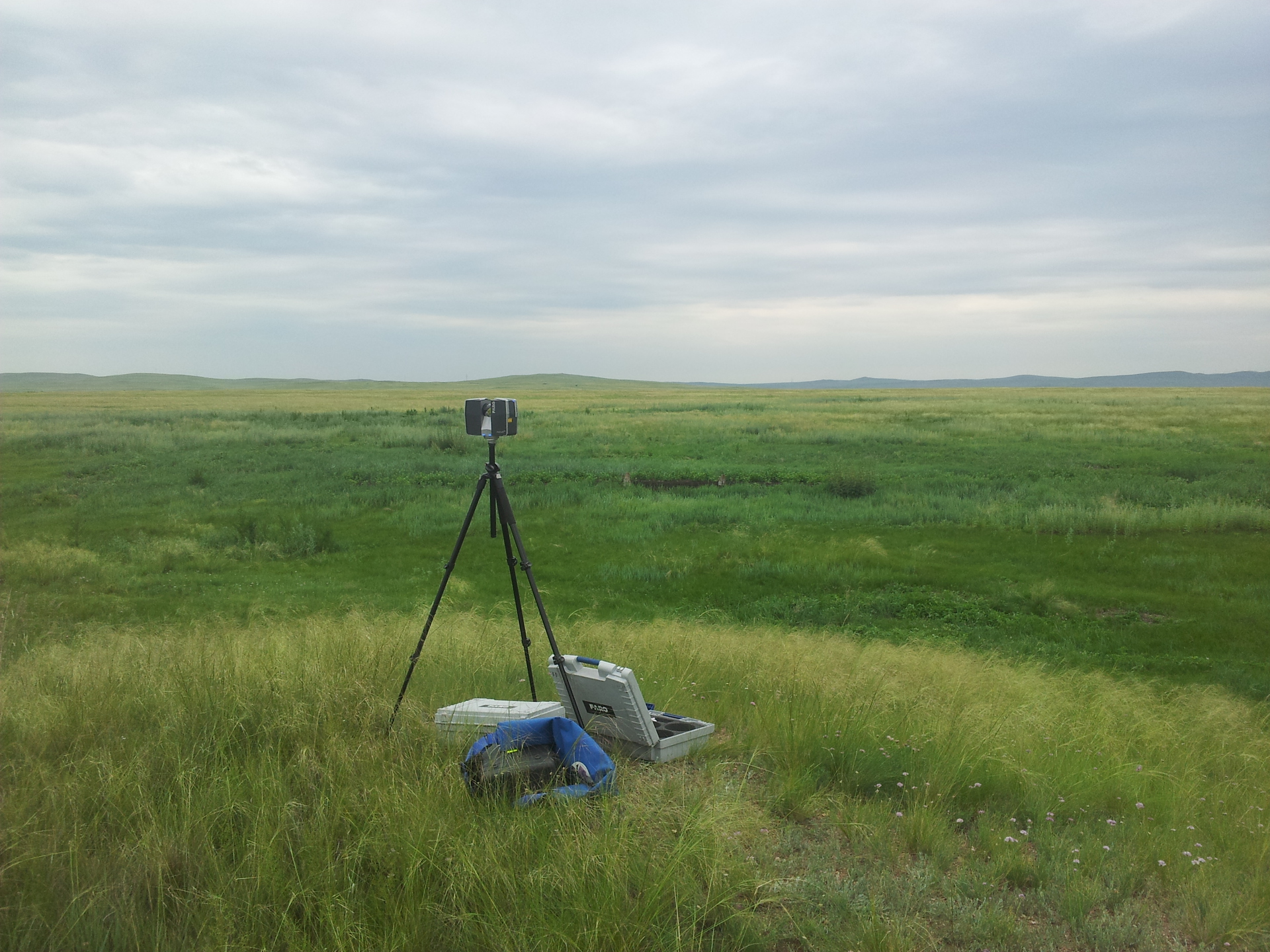
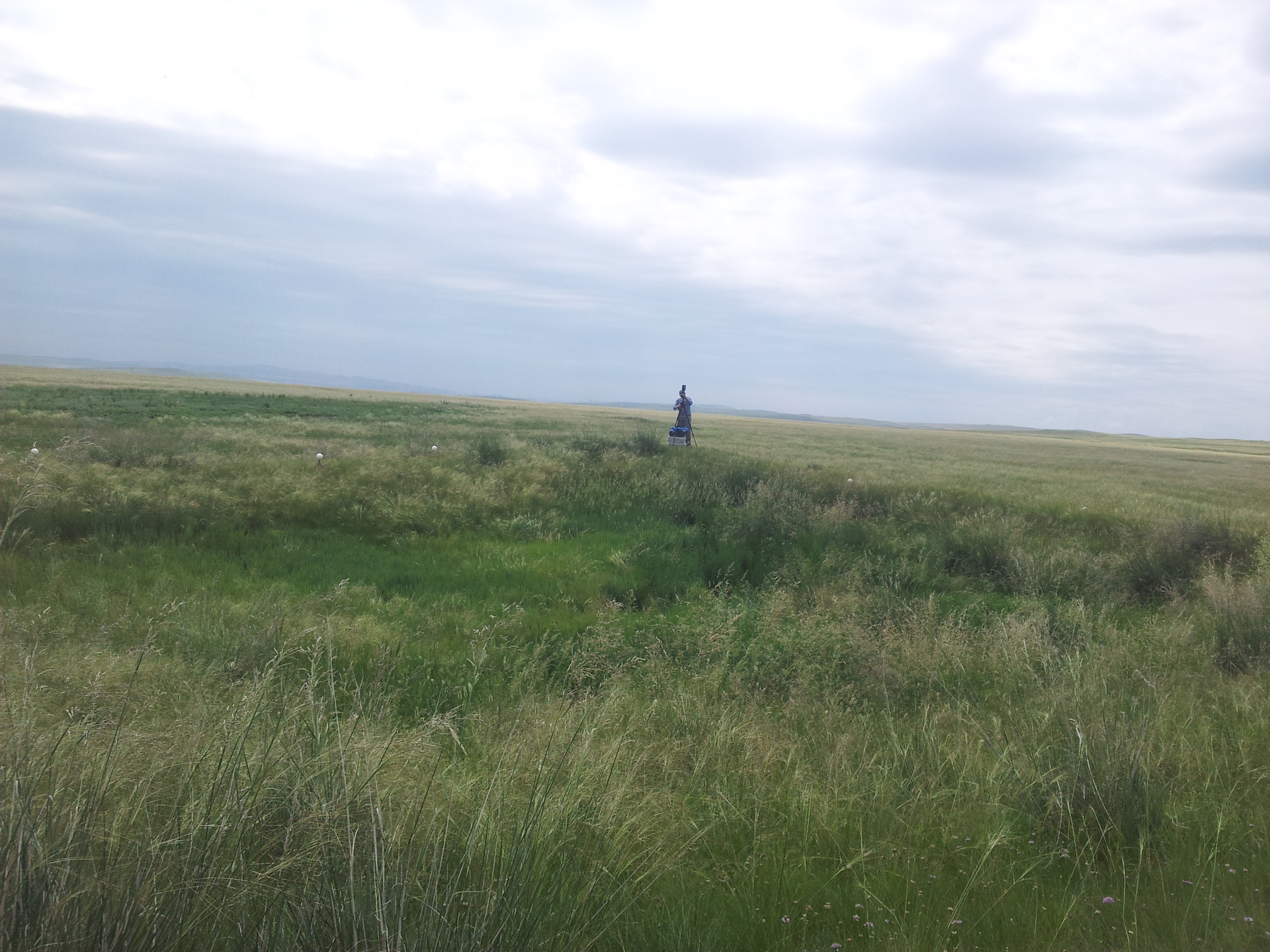

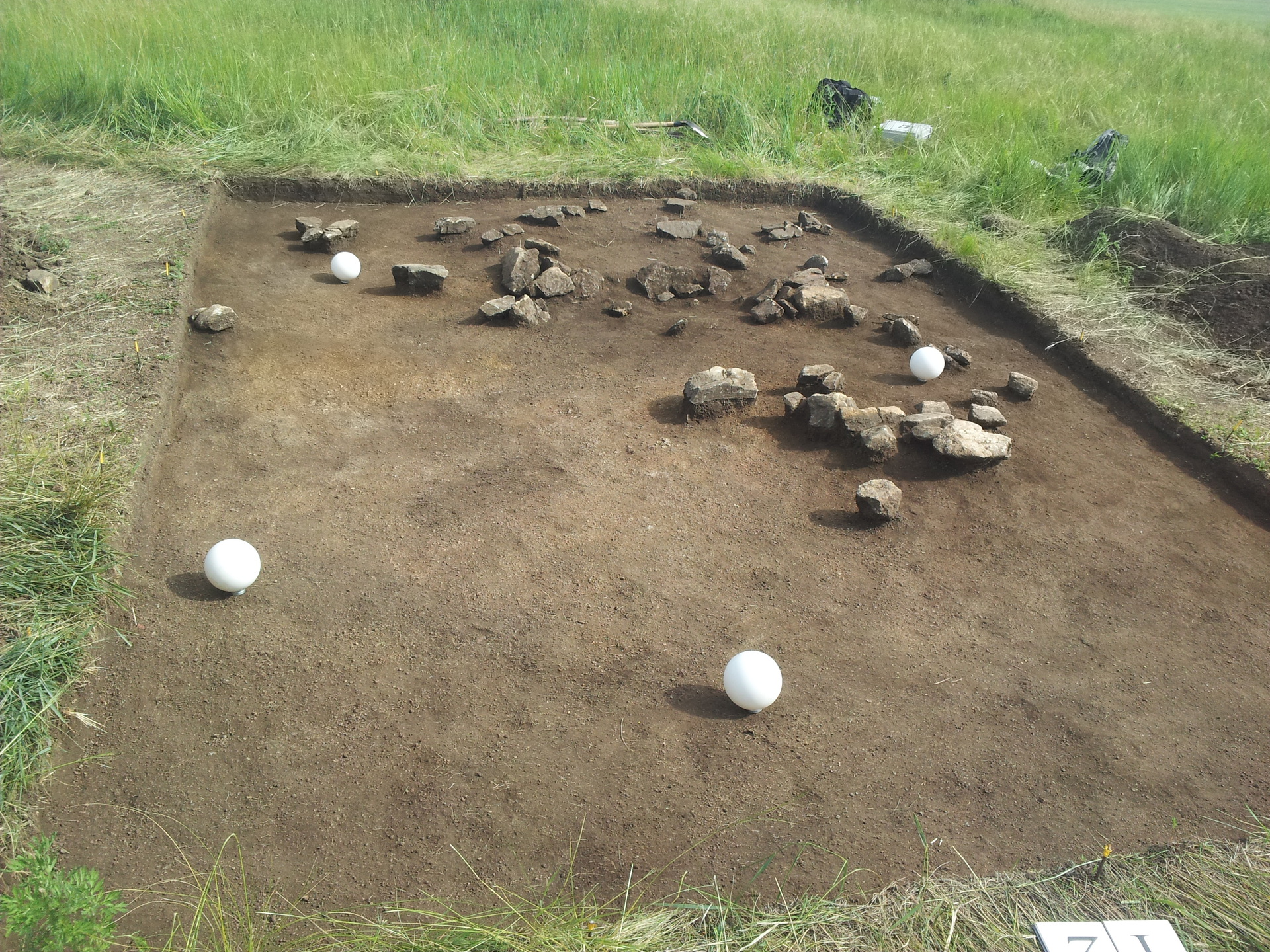
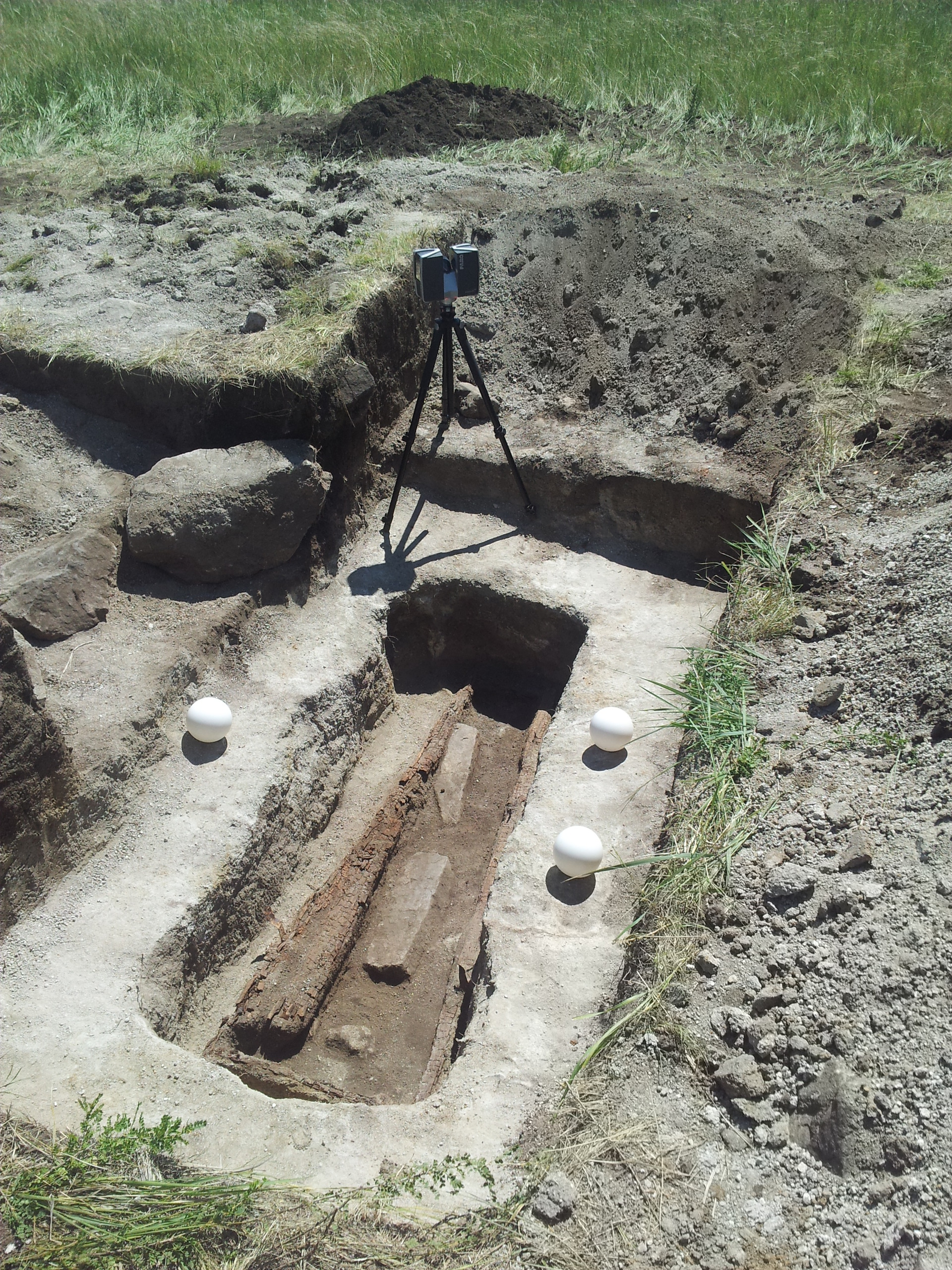
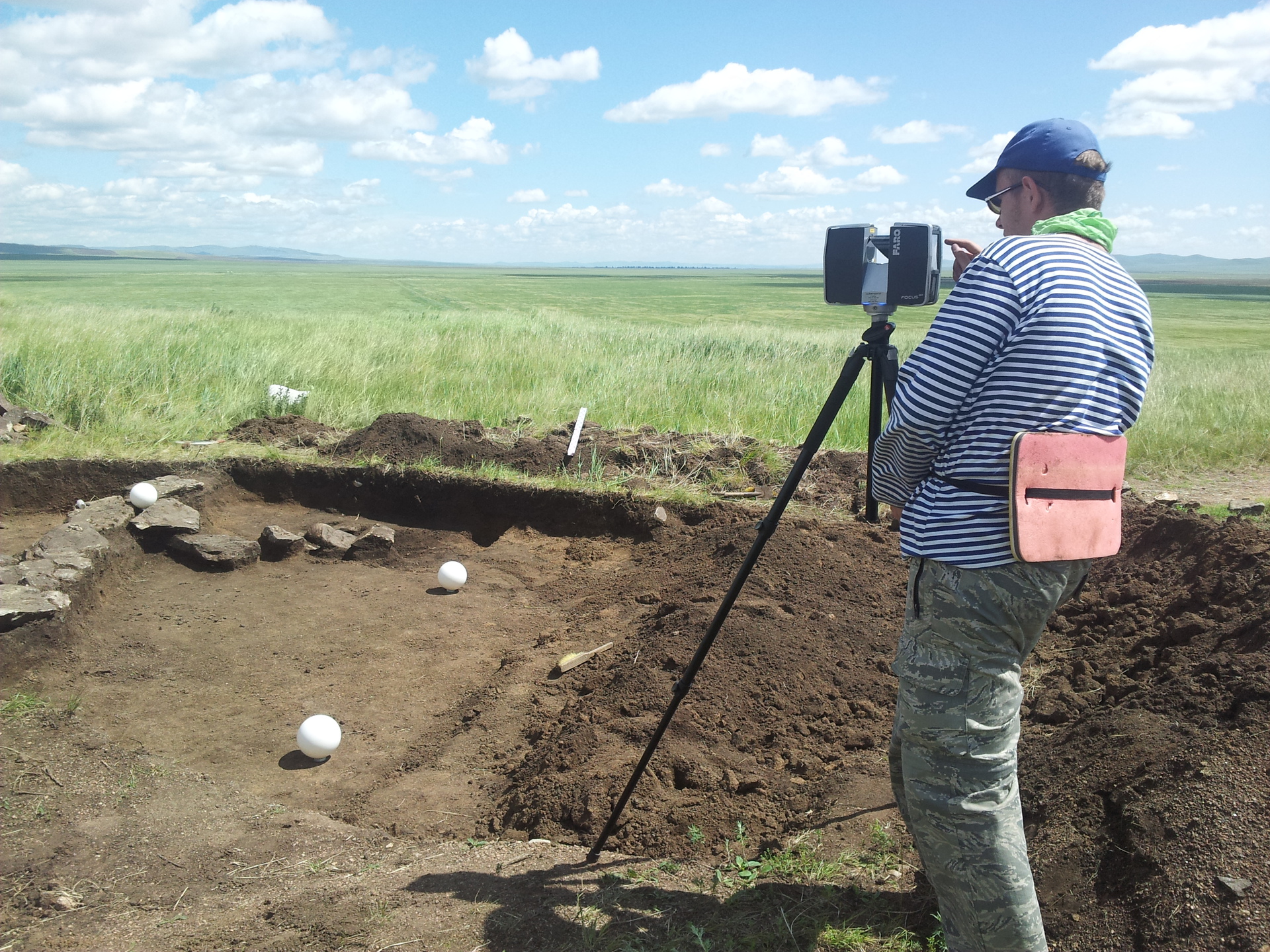
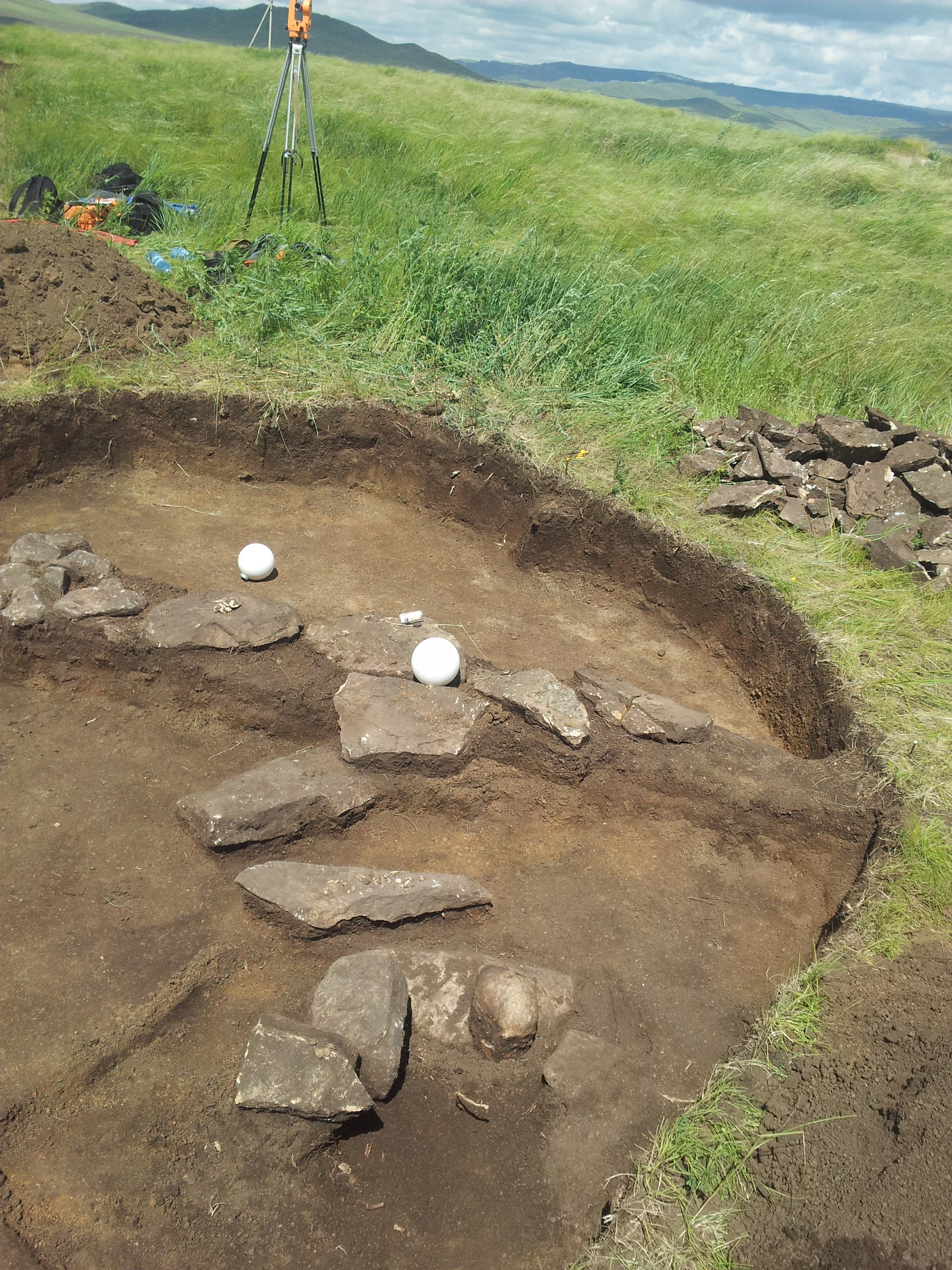
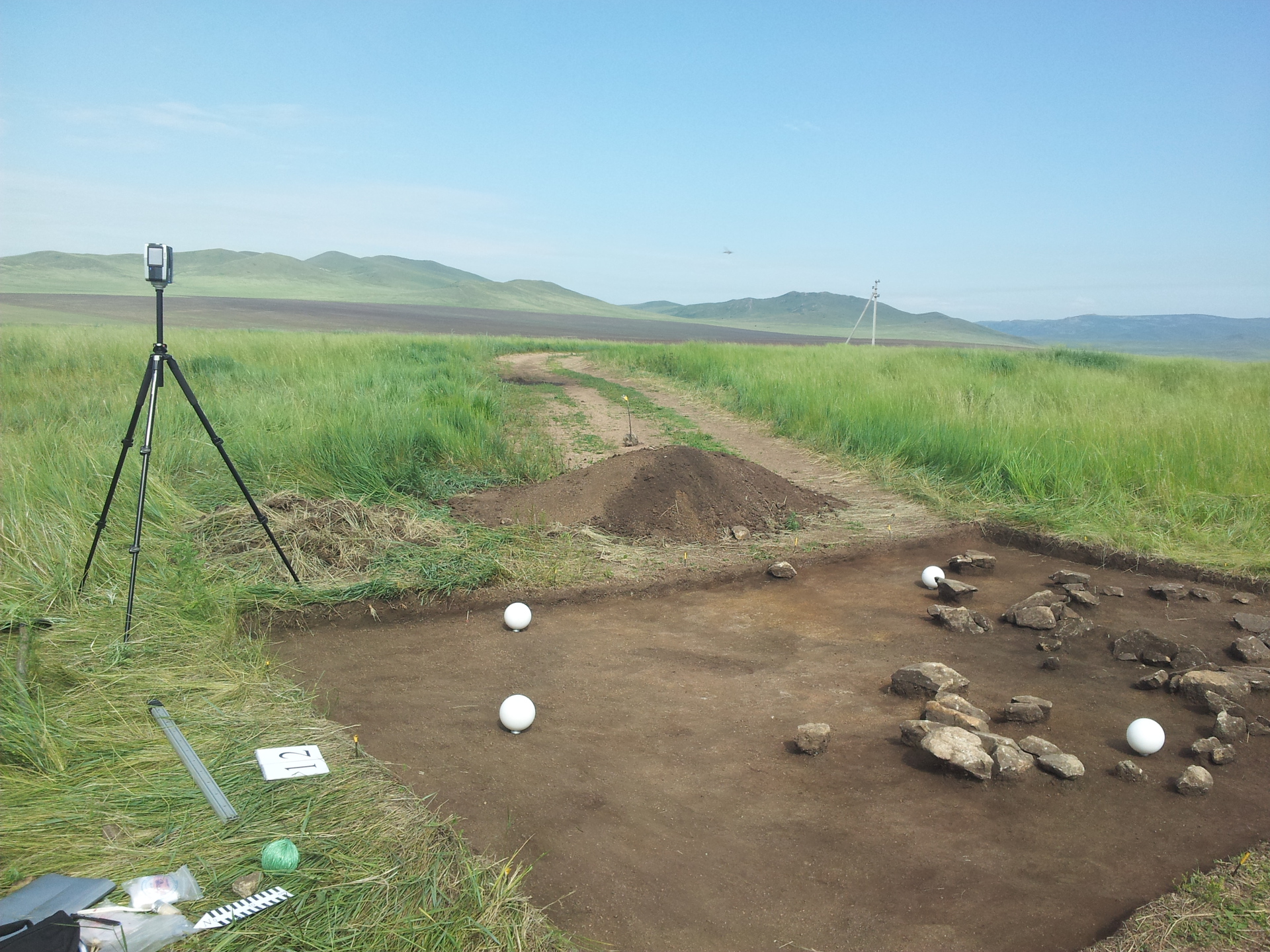










Konica-Minolta Virtuoso
This scanner was also brought to us by Canadians. You can get acquainted with it on the official website of the manufacturer. I can't say anything good. From the interesting - the data on the computer passes on a normal twisted pair. Software requires 64 bit Windows. The only scanner in our laboratory that does not know how to remove the texture. Poor software, in which nothing really can be done. Who cares, can download it from this link . All scans require post-processing in some other program. The quality of scans is rather low at a high cost of a scanner (27K green presidents).
Due to the fact that a lot of 3D scans of various things and objects are gradually accumulating in the laboratory, within the course / laboratory I started developing a database for publishing all this material, so maybe some time later (as soon as the first version and IT -the heads of the polytechnic will make a third-level subdomain, which is said to be quite difficult to beat out) our materials will be available on the Internet.
Anticipating the question about other archaeological laboratories that are engaged in 3D scanning, we can single out the center for collective use of the Tomsk State University “Artifact” . Also in Perm received a grant for the purchase of 3D scanners, and are already buying equipment.
But if you look at archeology and 3D scanning in Russia as a whole, as a rule, enthusiasts are engaged in this or attract various private companies, as is the case with the Denisova Cave in Altai. It is also known that the Multimedia Center of the NSU (it was with them, saw, communicated) with the help of David-laser scanner experiments with 3D scanning for the archaeological museum of Novosibirsk.
In the case of foreign archaeologists, 3D scanning is quite developed and widely used. A vivid example of the project of the Smithsonian University, not just mentioned here - 3d.si.edu .
Who cares, my personal selection of literature on the topic of 3D scanning in archeology.
Like everything I wanted to write in this post. If anyone is interested, ask in the comments. In the future, perhaps. on requests in the comments, if any, I can write more detailed articles on any 3D scanners, information technologies in archeology, etc., related to this topic.
Thanks for attention.
Source: https://habr.com/ru/post/223201/
All Articles